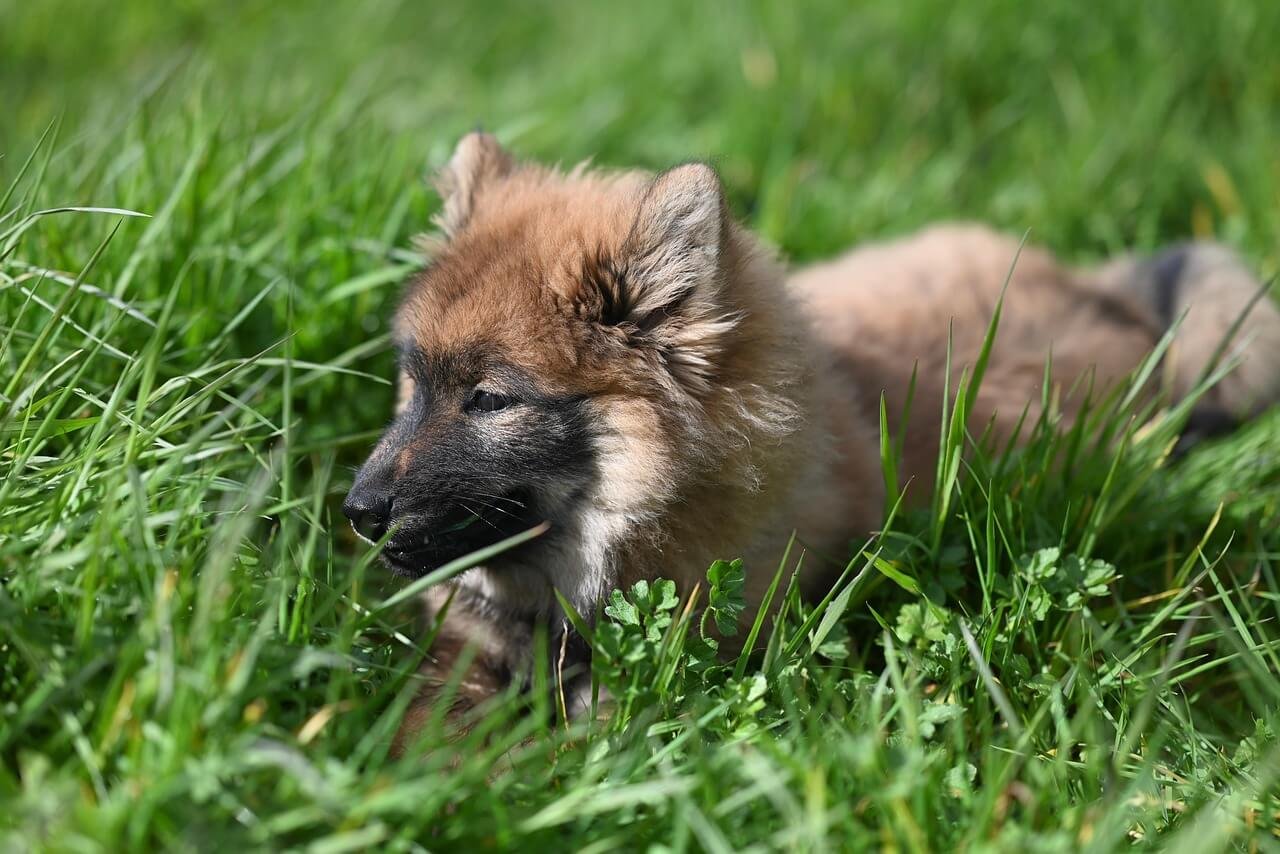Dog is Breathing Weird: What You Need to Know
As a dog owner, noticing that your furry friend is breathing unusually can be alarming. Whether it’s rapid panting, labored breaths, or strange noises, abnormal breathing patterns often signal that something might be wrong. While some causes are harmless and temporary, others could indicate serious health concerns that require immediate attention. Understanding the potential reasons behind your dog’s unusual breathing, recognizing warning signs, and knowing when to seek veterinary care can make all the difference in ensuring their well-being. Let’s explore this topic in detail to help you stay informed and prepared.
Common Causes of Abnormal Breathing in Dogs
There are several reasons why your dog might exhibit irregular breathing patterns. Identifying the underlying cause is crucial for determining whether the issue is mild or requires professional intervention.
Heat Exhaustion or Overheating:
Dogs regulate their body temperature by panting. If your dog has been in hot weather or exercised excessively, heavy panting may indicate overheating.Allergies or Irritants:
Exposure to pollen, dust, smoke, or other irritants can cause dogs to breathe abnormally as they try to clear their airways.Stress or Anxiety:
Emotional distress often leads to rapid or shallow breathing, especially during loud noises like thunderstorms or fireworks.Respiratory Infections:
Conditions like kennel cough or pneumonia can cause wheezing, coughing, or difficulty breathing due to inflammation in the respiratory tract.Heart or Lung Issues:
Underlying cardiovascular or pulmonary conditions, such as heart disease or fluid buildup, may result in labored or irregular breathing.
Understanding these common causes allows you to assess your dog’s condition more effectively and take appropriate action.

Signs That Your Dog’s Breathing Is Abnormal
Recognizing the symptoms of abnormal breathing early can help you address potential issues before they escalate. Look out for these telltale signs that something might be amiss.
Excessive Panting Without Exercise:
If your dog pants heavily even when resting or in cool environments, it could signify discomfort or an underlying health problem.Wheezing or Whistling Sounds:
Unusual noises while breathing may indicate obstructions, infections, or respiratory disorders.Blue Gums or Tongue:
A bluish tint to your dog’s gums or tongue suggests oxygen deprivation, which requires emergency care.Rapid or Shallow Breaths:
Breathing faster than normal without apparent reason can point to pain, fever, or respiratory distress.Coughing or Gagging:
Persistent coughing or gagging may signal blockages, infections, or chronic conditions like collapsing trachea.
By staying vigilant and observing these signs, you can act quickly to protect your dog’s health.
Check this guide 👉Why Is My Dog Breathing Fast in His Sleep? Best 7 Tips!
Check this guide 👉Understanding Dog Snort Breathing: Best 7 Health Tips!
Check this guide 👉Understanding Labored Breathing in Dogs: Best 7 Tips!
Possible Symptoms of Abnormal Breathing | Potential Causes |
|---|---|
Excessive panting | Heatstroke, stress, or anxiety |
Wheezing or whistling sounds | Allergies, asthma, or foreign objects |
Blue gums or tongue | Lack of oxygen, heart failure |
Rapid or shallow breathing | Pain, fever, or respiratory infection |
Coughing or gagging | Kennel cough, collapsed trachea |
Steps to Take When Your Dog Is Breathing Weird
If you notice your dog exhibiting abnormal breathing, there are several steps you can take to assess the situation and provide initial care. Acting calmly and methodically is essential.
Check Their Environment:
Ensure your dog isn’t exposed to extreme temperatures, allergens, or stressful stimuli that could trigger abnormal breathing.Observe for Other Symptoms:
Look for additional signs like lethargy, vomiting, or swelling, which can provide clues about the root cause.Provide Fresh Air:
Move your dog to a cool, well-ventilated area if they appear overheated or struggling to breathe comfortably.Avoid Physical Activity:
Refrain from encouraging exercise until their breathing stabilizes, as exertion could worsen certain conditions.Contact Your Veterinarian:
If the issue persists or worsens, consult your vet immediately for a thorough evaluation and diagnosis.
Taking these proactive steps ensures your dog receives timely care and minimizes risks associated with abnormal breathing.
Preventing Abnormal Breathing Episodes in Dogs
While not all cases of abnormal breathing can be prevented, there are measures you can take to reduce the likelihood of such episodes. Prevention plays a key role in maintaining your dog’s overall health.
Maintain a Safe Temperature:
Avoid exposing your dog to extreme heat or cold, and always provide access to fresh water.Regular Vet Check-Ups:
Routine examinations help detect underlying health issues early, preventing complications that affect breathing.Keep Them Fit and Active:
Obesity can strain the respiratory system, so ensure your dog maintains a healthy weight through diet and exercise.Minimize Stress Triggers:
Identify and manage situations that cause anxiety, such as loud noises or unfamiliar environments.Monitor for Allergies:
Be aware of substances that irritate your dog’s respiratory system and remove them from their environment whenever possible.
By adopting these preventive strategies, you can help safeguard your dog against unnecessary breathing difficulties.
Types of Breathing Patterns to Watch For
Dogs display various breathing patterns depending on their activity level, emotions, and health status. Recognizing these patterns helps you determine whether their breathing is normal or concerning.
Normal Panting:
Occurs after exercise or in warm weather as a way to cool down; typically resolves quickly once rested.Reverse Sneezing:
A sudden, honking sound caused by irritation in the throat; usually harmless but alarming to witness.Labored Breathing (Dyspnea):
Characterized by visible effort to breathe, such as flared nostrils or extended neck posture, indicating potential respiratory distress.Rapid Breathing (Tachypnea):
Fast, shallow breaths often linked to pain, fear, or fever; requires monitoring for improvement.Noisy Breathing:
Includes snorting, wheezing, or gurgling sounds, which may suggest obstructions or infections.
Understanding these patterns empowers you to differentiate between harmless quirks and serious concerns.
Breeds Prone to Breathing Problems
Certain dog breeds are predisposed to respiratory issues due to their anatomy or genetic traits. Knowing if your dog falls into one of these categories allows you to take extra precautions.
Brachycephalic Breeds:
Bulldogs, pugs, and shih tzus have shortened airways, making them prone to brachycephalic airway syndrome.Long-Nosed Breeds:
Greyhounds and collies may experience sinus issues or nasal tumors due to their elongated muzzles.Flat-Faced Cats vs. Dogs:
Similar to brachycephalic dogs, flat-faced cats also share similar challenges but here we focus on dogs specifically.Toy Breeds:
Small breeds like Chihuahuas and Pomeranians are susceptible to collapsing tracheas, leading to chronic coughing.Active Working Breeds:
High-energy dogs like German shepherds and boxers are at risk of exercise-induced collapse or laryngeal paralysis.
Awareness of breed-specific vulnerabilities enables you to tailor care and prevention strategies accordingly.
Emergency Situations Requiring Immediate Attention
Some instances of abnormal breathing demand urgent veterinary care to prevent further complications. Knowing when to seek help can save your dog’s life.
Sudden Collapse or Weakness:
If your dog collapses or seems unable to stand, it could indicate severe oxygen deprivation or shock.Persistent Blue Gums:
Cyanosis (blue gums) signals critical oxygen deficiency and requires immediate treatment.Inability to Close Mouth or Breathe Normally:
This could mean a foreign object is lodged in their throat, requiring swift removal.Severe Bleeding or Trauma:
Accidents causing chest injuries can impair breathing and necessitate emergency intervention.Unresponsive Behavior:
If your dog appears unresponsive or unconscious, call for emergency assistance right away.
Quick recognition of these scenarios ensures your dog receives the lifesaving care they need.
Frequently Asked Questions About Dog Breathing Issues
Why does my dog breathe weirdly at night?
Nighttime breathing issues may stem from sleeping positions, allergies, or undiagnosed conditions like sleep apnea.
How do I know if my dog’s breathing is normal?
Normal breathing should be quiet, rhythmic, and effortless. Any deviation lasting more than a few minutes warrants investigation.
Can stress cause weird breathing in dogs?
Yes, anxiety can trigger hyperventilation or panting. Addressing the root cause of stress often helps.
Is weird breathing in puppies normal?
Puppies sometimes exhibit irregular breathing due to growth spurts or excitement, but persistent abnormalities should still be checked.
What should I bring to the vet appointment?
Bring notes on symptoms, duration, and any environmental factors that might contribute.
Staying Alert for Your Dog’s Breathing Health
Abnormal breathing in dogs can range from minor annoyances to life-threatening emergencies, making it vital to remain observant and responsive. By understanding the potential causes, recognizing warning signs, and taking prompt action, you can ensure your beloved companion stays healthy and comfortable. Remember, when in doubt, consulting your veterinarian is always the safest course of action. With vigilance and care, you can continue to enjoy countless happy moments with your four-legged friend.
Canned Pumpkin for Cat Diarrhea: Best 7 Expert Tips! Natural remedy to firm stools, soothe upset bellies, and support gut health safely.
Can a Cat Give You Scabies? Best 7 Expert Tips! Discover the truth about feline mites, human skin risks, and how to protect yourself—without panic.
Cat Flea vs Human Flea: Best 7 Expert Tips! Discover the truth about bites, species, and how to eliminate infestations for good.
Weird Cat Behaviors: Best 7 Expert Tips! Discover why cats do strange things—and how to understand, not punish, their instincts for a happier home.





